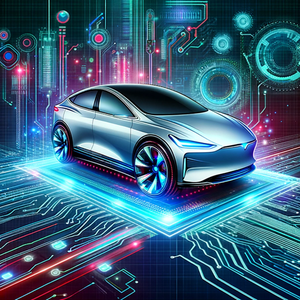The recent return to the moon has invigorated the imagination of the world, reminding us of the undying spirit of exploration and the boundless capacity of human ingenuity. However, beyond the heroics and grand symbolism, the Apollo anniversary holds a deeper story—a tale of technological advancement that has reshaped our world.
Fifty years ago, the world watched in awe as Neil Armstrong took a "giant leap for mankind," marking a new era in space exploration. Today, as we revisit our lunar neighbor, the spotlight shifts from the footprints of our past to the technology that put us there and promises to take us further.
In this opinion piece, I will outline how the spirit of Apollo has evolved into a web of connected and automated technologies that not only took us to the moon but continue to power the modern world and provide a blueprint for the future.
From Moon Dust to Digital Dust
The first lunar landing was an analog triumph, steered by human hands and guided by less computing power than our modern smartphones. The recent mission, however, has underlined a quantum leap in automation and digital sophistication. From the daunting complexity of the launch sequences to the precision of the landing and sample collection, each step was choreographed by a symphony of sensors, algorithms, and machines.
This transition from moon dust to digital dust is a testament to the relentless march of technology, surmounting challenges that were once thought insurmountable. No longer reliant solely on human skill, space exploration is now a dance between man and machine, where the latter's role is increasingly pivotal—and impressive.
The Web of Autonomy Descends
The legacy of Apollo has laid the groundwork for a world connected by autonomous systems. Our cars, trains, and planes are becoming more autonomous—guided by principles that piloted the Apollo missions. This interconnected web is growing ever more intricate, promising safer, more efficient transportation. From adaptive cruise control and lane-keeping assistance to autonomous rovers on Mars, automation is transforming the way we travel and explore.
The painstaking ascent from the Sea of Tranquility mirrored the disciplined ascent of these technologies from the recesses of laboratories to the forefront of our daily lives. It is a synergy of human and machine intelligence, each contributing its unique capabilities, that allow us to push the boundaries of what is possible.
Beyond Moonshots: Applications on Earth
While the moon sits like a remote and silent audience, the technologies it has spurred find applications closer to home. The computational power and systems reliability developed for space missions now fortify our industrial infrastructure, energy grids, and telecommunications. These robust systems are the backbone of our modern way of life, ensuring the smooth operation of everything from traffic lights to global financial services.
The legacy of Apollo has not just landed on the moon; it has touched down in our homes, workplaces, and pockets, enriching our lives with conveniences and capabilities that were the stuff of science fiction just a few decades ago.
Steering Toward the Future
The moon landing, past and present, serve as powerful motivation for the continued pursuit of automation and connected systems. We stand on the cusp of a new age in transportation, one where autonomous vehicles will share the road with conventional ones, guided by the same principles that saw a tenacious lander touch down on the lunar surface within meters of its intended target.
The next moonshot, be it a literal or metaphorical leap, will build upon and expand these technologies, pushing the envelope of what we can achieve and how we can live. The path ahead is illuminated by the glow of the moon, casting a soft light on a future that is ever more automated and connected.
Final Thought
The recent moon landing was a celebration not just of humankind's ability to dream but our innate quest to turn those dreams into reality. It is a tribute to the engineers, scientists, and visionaries who have dedicated themselves to the pursuit of knowledge and the betterment of our shared world.
In this era of rapid change, it is crucial to cherish the heritage of innovation and exploration that the Apollo missions have bequeathed us. It is by understanding the past that we lay the groundwork for a future where automation and connected technologies mark the next giant leap, not just for humankind but for the very world we inhabit.
The Moon landing was an achievement of the highest order—an intricate dance of technology and human spirit that had only just begun. It is an achievement we should celebrate with pride and view as the launchpad for what lies ahead.
Maverick is the call sign of Mobile Gnosis Editor-in-Chief Matt De Reno.


